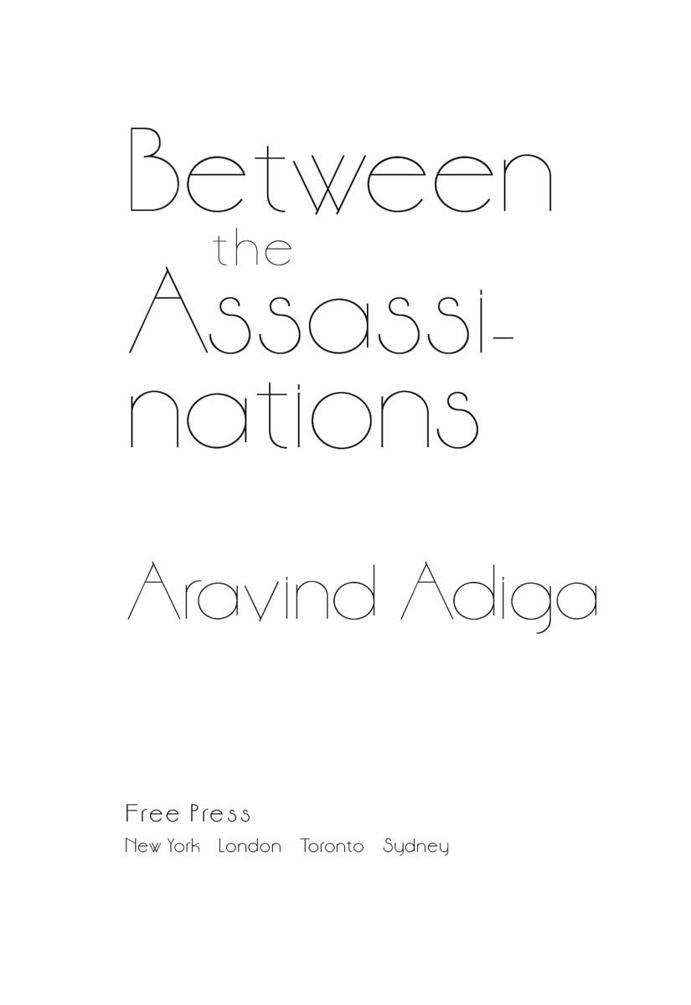
Between the Assassinations
کتاب های مرتبط
- اطلاعات
- نقد و بررسی
- دیدگاه کاربران
نقد و بررسی

Starred review from April 6, 2009
This short story collection, teeming with life in the small Indian city of Kittur between the assassination of Indira Gandhi in 1984 and that of her son Rajiv in 1991, serves as a prelude to Adiga’s Booker Prize–winning The White Tiger
. Loosely based on a tourist itinerary, the stories meander through the lives of a motley array of hoykas and Brahmins, Muslims and Christians. We meet Xerox, the peddler of illegally copied books who doesn’t mind having been arrested 21 times, as this seems a step up from his father’s work as an excrement shoveler. Then there is Jayamma: the eighth of nine daughters, she is sent out to work because her father had only enough money to marry off six daughters. Her only comfort is getting high on DDT fumes and rubbing the buttocks of a tiny idol of baby Krishna. Adiga’s India is a place of wildly disparate fortunes, where a 500-rupee meal at the Oberoi Hotel in Bombay scandalizes a construction worker who marvels at the sight of a 20-rupee note. It’s a gruesome picture of existence, and the small epiphanies hit like bricks from heaven.

Starred review from May 1, 2009
Adiga follows up his Man Booker Prize–winning debut (The White Tiger, 2008) with a collection of interconnected stories about the village of Kittur in southwestern India.
The title refers to the period between the assassinations of Indira Gandhi in 1984 and Rajiv Gandhi in 1991, though there isn't much evidence of chronological progression here. The outside world seldom intrudes on Kittur, yet the tensions of caste and the conflicts of religion course through the narrative, sparking comedy and tragedy—sometimes both at once. The text is structured as a week's walking tour of the village; italicized sections describing buildings and landmarks precede the stories of various characters. Among the protagonists are an ambitious delivery carrier, a workman who oversteps his bounds and a lower-caste schoolboy who sets off an explosion in chemistry class to avenge the mockery he has endured. One of the strongest pieces features a renowned journalist who has become disenchanted with his profession."Even the writer of the truth should not know the truth entire," he thinks."Every true word, upon being written, is like the full moon, and daily it wanes, and then passes entirely into obscurity. That is the way of all things." The often-poetic tone recalls fairy tales and folk parables, as poor people in particular come to terms with the way of all things, foremost among them that"the rich own the whole world." Toward the end, Adiga introduces a character who could be confused with his creator, a writer praised as a young man because he has"gone into the countryside, and seen life there, unlike 90 percent of our writers." Returning 25 years later, he falls in love with a much younger woman and realizes how much of an outsider he is:"he had become the stock figure whom he had worked into several of his stories—the lecherous old Brahmin, preying on an innocent girl of a lower caste."
These provocative tales suggest that fiction illuminates truths beyond the reach of journalism.
(COPYRIGHT (2009) KIRKUS REVIEWS/NIELSEN BUSINESS MEDIA, INC. ALL RIGHTS RESERVED.)

Starred review from June 1, 2009
From the author of "The White Tiger", which won the 2008 Man Booker Prize, comes this collection of stories set in Kittur, India, between the assassinations of Indira Gandhi in 1984 and Rajiv Ghandi in 1991. Adiga captures the lives of the poor and powerless, doomed to hopelessness and sometimes rage. In "Market and Maidan," for example, an orphan comes to the city, where he works his way up to become a bus conductor but then loses everything when he falls off a bus and suffers a head injury. In some of the tales, the bleakness is relieved by the power of human connections. Thus, in "St. Alfonso Boys' High School and Junior College," Shankara's wealth can't compensate for the humiliations of his mixed-caste status, so he explodes a bomb in a classroom in retaliation for a teacher's mistreatment. But during the ensuing investigation, he recognizes that the teacher, who stutters, is a kindred spirit. VERDICT A stunning work; highly recommended.Evelyn Beck, Piedmont Tech. Coll., Greenwood, SC
Copyright 2009 Library Journal, LLC Used with permission.

May 1, 2009
Adiga provides both a chronological and geographical framework for this collection of stories, a prequel to his Man Bookerwinning The White Tiger (2008). The stories take place during the years between the assassinations of Indira Gandhi in 1984 and Rajiv Gandhi in 1991. Each story is introduced by an excerpt from a guide for a weeklong tour of the fictional city of Kittur, located on Indias southwestern coast. The blandness of the travel guide is a counterpoint to the vibrant, messy city life, where Hindu, Muslim, and Christian, high and low caste, rich and poor, all jostle together. As in The White Tiger, corruption and injustice are important themes, and while afewcharacters find ways to strike back, most are caughtin the daily grind of trying to survive.Although sometimes heavy handed, the stories are sharplytactile, andthe city of Kittur isrichly imagined.Once again, Adiga offers a panoramic viewof India, this time by giving voices and names to the multitude.(Reprinted with permission of Booklist, copyright 2009, American Library Association.)

























دیدگاه کاربران